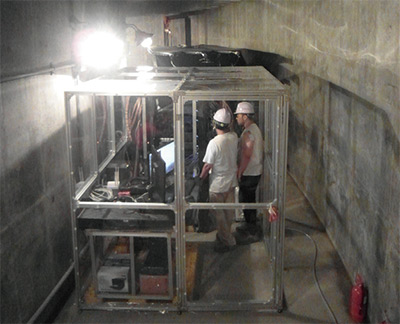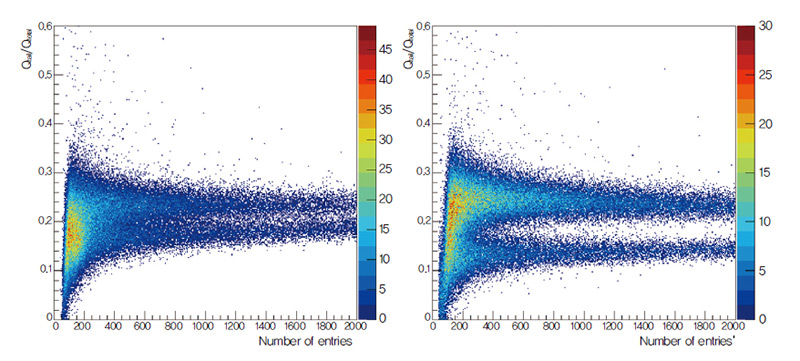주메뉴
- About IBS 연구원소개
-
Research Centers
연구단소개
- Research Outcomes
- Mathematics
- Physics
- Center for Underground Physics
- Center for Theoretical Physics of the Universe (Particle Theory and Cosmology Group)
- Center for Theoretical Physics of the Universe (Cosmology, Gravity and Astroparticle Physics Group)
- Dark Matter Axion Group
- Center for Artificial Low Dimensional Electronic Systems
- Center for Quantum Nanoscience
- Center for Exotic Nuclear Studies
- Center for Van der Waals Quantum Solids
- Center for Relativistic Laser Science
- Chemistry
- Life Sciences
- Earth Science
- Interdisciplinary
- Center for Neuroscience Imaging Research (Neuro Technology Group)
- Center for Neuroscience Imaging Research (Cognitive and Computational Neuroscience Group)
- Center for Algorithmic and Robotized Synthesis
- Center for Nanomedicine
- Center for Biomolecular and Cellular Structure
- Center for 2D Quantum Heterostructures
- Institutes
- Korea Virus Research Institute
- News Center 뉴스 센터
- Career 인재초빙
- Living in Korea IBS School-UST
- IBS School 윤리경영


주메뉴
- About IBS
-
Research Centers
- Research Outcomes
- Mathematics
- Physics
- Center for Underground Physics
- Center for Theoretical Physics of the Universe (Particle Theory and Cosmology Group)
- Center for Theoretical Physics of the Universe (Cosmology, Gravity and Astroparticle Physics Group)
- Dark Matter Axion Group
- Center for Artificial Low Dimensional Electronic Systems
- Center for Quantum Nanoscience
- Center for Exotic Nuclear Studies
- Center for Van der Waals Quantum Solids
- Center for Relativistic Laser Science
- Chemistry
- Life Sciences
- Earth Science
- Interdisciplinary
- Center for Neuroscience Imaging Research (Neuro Technology Group)
- Center for Neuroscience Imaging Research (Cognitive and Computational Neuroscience Group)
- Center for Algorithmic and Robotized Synthesis
- Center for Nanomedicine
- Center for Biomolecular and Cellular Structure
- Center for 2D Quantum Heterostructures
- Institutes
- Korea Virus Research Institute
- News Center
- Career
- Living in Korea
- IBS School
News Center
|
Searching for the fourth neutrino Neutrinos are one of the fundamental particles that constitute the universe. These elementary particles are created when an unstable atomic nucleus undergoes beta decay. They are produced in great numbers by nuclear fusion reactions in the core of the Sun or from supernova explosions (and also in nuclear reactors). Neutrinos were thought to be one of the candidates for dark matter and were referred to as “ghostly particles,” because they have no electric charge and their masses are so tiny that they are extremely difficult to observe. Researchers all over the world have joined in the search for neutrinos, the key to solving the mystery of the universe, with the Center for Underground Physics (Director Yeongduk Kim) taking the lead.
Three types of neutrinos have been discovered.
However, the existing three flavors of neutrinos
cannot account for the reactor neutrino
anomaly recently discovered in experiments
conducted a short distance from reactors.
Hence, the Center has started a new experiment
to find the unknown fourth neutrino.
The NEOS detector is composed of several
layers of shielding that block or eliminate
background events. The outermost layer is
polyethylene, under which the detector that
prevents the interference of muons with a
plastic scintillator and a photomultiplier tube is
installed. Lead blocks gamma rays, and lastly,
borated polyethylene is used to block neutrons.
In addition, background events can also be
eliminated using the properties of the liquid
scintillator, which is used as a target for
neutrinos. This process is called pulse shape
discrimination (PSD). Pulse shapes emitted
when particles react with the scintillator differ
according to particle type. Particles may be
distinguished using this difference.
Linear Alkyl Benzene, or LAB, has mainly
been used as a solvent for liquid scintillators.
LAB is safe to handle due to its high flash
point, nontoxic and therefore environmentally
friendly, and has good transparency. However,
a drawback of LAB-based liquid scintillators
is their low PSD performance. For this reason,
the Center developed a liquid scintillator
with groundbreaking improvement in PSD
performance. |
| before | |
|---|---|
| Next |
- Content Manager
- Public Relations Team : Yim Ji Yeob 042-878-8173
- Last Update 2023-11-28 14:20













